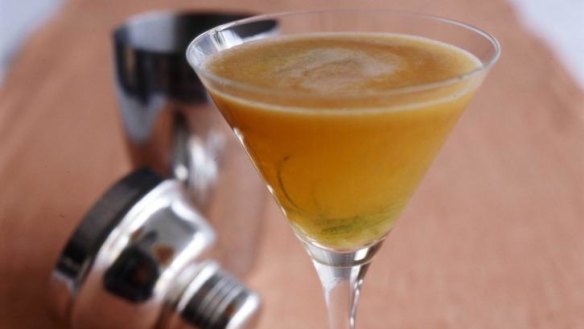Brandy ready for a comeback

With the number of artisan brandy makers on the rise, the once unsociable drink is ripe for a comeback.
Outside a huddle of cocktail geeks, brandy couldn't be more unfashionable. Gin, rum, whisky, tequila, vermouth, even sherry, for crying out loud, can all claim levels of innate or hard-earned cool, but brandy remains, if not exactly vulgar, then certainly more than a little naff.
Of course, not all brandies are created equal. Although on the same family tree (the one where they all start from a distilled base-wine that's aged in wooden barrels), some turn their backs on the name brandy, preferring specific labels such as cognac, armagnac and pisco that ostensibly denote region, but also carry greater levels of prestige, reliability, fashionableness and, inevitably, price.
Take the local example of Ochre, an upmarket spirit being produced by Mornington Peninsula's Bass & Flinders Distillery that's made like cognac (double distilled in a copper alembic still and then aged in French oak barrels), but can't be called cognac because of appellation rules. Rater than mention brandy anywhere, it bills itself as an "aged grape spirit".
So what is it about brandy that has given it a reputation as tipple of choice for the socially inept, the pantry drinkers and the wearers of moth-eaten smoking jackets? Perhaps it's in the unromantic backstory.
Brandy first became prominent in northern Europe as the result of a tax dodge.Distillation of wine is thought to have taken place in southern Europe from about the 12th century; Dutch traders called the product brandewijn, or "burnt wine". The process made it easier to preserve and transport; it also lessened the tax on it, which at the time was assessed by volume. Originally, the idea was to distil the wine and then add water once it had been taxed, but it was discovered that the distilled liquid, stored in wooden casks, became a different, more refined and complex entity that could attract greater prices.
A more likely reason for brandy's tarnished reputation, particularly in Australia, has been the existence of too many poor, cheap approximations that burn the throat, bring tears to eyes and ignore all the qualities that good brandy can bring to the table – vivacious floral and herbaceous notes when young, and a smooth nutty complexity when it acquires a few years.
Other spirits, such as rum and tequila, have shaken off bad reputations, and now with the chilly winds of winter approaching and small and large Australian distillers (including the biggest, St Agnes and Black Bottle) lavishing care, attention and age on their brandy, it seems like the perfect time to start bringing brandy into the fold.
There are good arguments for drinking the stuff straight, especially at the aged cognac and cognac-like end of the spectrum, where the flavour profile can be anything from cigar box and leather to walnuts and orange blossom. Snifters or brandy balloons are good for those who like to sniff and swirl, and ideal for those who like to warm brandy with their hands. Warming enhances the flavour and aroma and can also be achieved via warming the glass with hot water or using a gentle, open flame, a method that's a tad showy and can end up overheating the brandy.
Brandy is also an excellent friend of cocktails. While the Brandy Alexander (equal parts brandy, creme de cacao and cream, shaken with ice, strained and garnished with grated nutmeg) is possibly the most famous or infamous and is surely due for a retro rerun, it is the Sidecar that's the brandy cocktail with the most cred.
The Sidecar has been around since the early part of the 20th century, and there have been many versions, but a good entry-level recipe contains 40 millilitres of brandy (preferably cognac), 20 millilitres of triple sec, Cointreau or Grand Marnier, and 30 millilitres of fresh lemon juice, shaken with ice and strained into a cocktail glass. Garnishes can include an orange or lemon twist or, if you're feeling frisky, a sugar rim (run a slice of lemon around the rim and then dip it in sugar). It's a suave, refreshing drink, with the cognac providing its smooth, dark heart.
With an increasing number of local artisan brandy makers on the horizon, it's time for brandy to make like gin and have its moment. It's time to bring it in from the cold.
